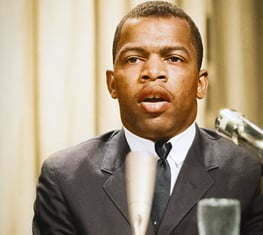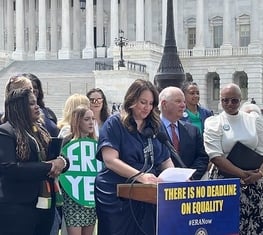Parliamentary Guidelines
ORDER OF BUSINESS
A minimum number (quorum), as prescribed in the bylaws, must be present before business can be legally transacted. The presiding officer should determine that there is a quorum before beginning the meeting. Every organization is free to decide the order in which its business will be conducted, but most agendas follow a standard pattern:
- Call to Order.
- Minutes are read by the secretary and corrections requested. The presiding officer says: If there are no corrections, the minutes stand approved as read.
- Treasurer's Report is given and questions called for: The Treasurer's Report will be filed.
- Reports of officers and standing committees. Recommendations in reports should be dealt with as motions at this point.
- Reports of special committees.
- Unfinished business. Items left over from the previous meeting are brought up in turn by the presiding officer.
- New business: Is there any new business?
- Announcements.
- Adjournment: Is there any further business? (Pause) The meeting is adjourned.
MOTIONS
Business is conducted by acting on motions. A subject is introduced by a main motion. Once this has been seconded and stated by the presiding officer, nothing else should be taken up until it is disposed of. Long and involved motions should be submitted in writing. Once a motion has been stated, the mover may not withdraw it without the consent of the meeting. Most motions must be seconded.
While a main motion is being considered, other parliamentary motions, which affect either the main motion or the general conduct of the meeting, may be made. The ones most frequently used are described in general below, but it should be noted that there are exceptions and modifications that cannot be included in this brief text.
- Amend. (Debatable; majority vote). Used when the intention is to change, add or omit words in the main motion. Amend the amendment: Used to change, add or omit words in the first amendment. This motion cannot itself be amended.
- Refer. (Debatable; majority vote). If a motion has become too complicated through amendments, or if more information is needed, a motion may be made to refer it to a committee for study or redrafting. This committee must report back or act as instructed.
- Postpone. (Debatable; majority vote). Consideration of a motion can be delayed until a more suitable time, until other decisions have been made, or until more information is available by a motion to postpone to a stated future time.
- Lay on the table (Not debatable; majority vote). I move that we table this motion. This sets the motion aside so that a more urgent matter can be dealt with and then the motion can be taken up again when a majority decides to "take it from the table."
- The previous question. (Not debatable; two-thirds vote). I move the previous question. This motion is used to end debate that has become lengthy or repetitious. When it is seconded, the presiding officer immediately puts the question on closing debate. If this receives a two-thirds vote, the pending motion is voted on at once without further discussion.
- Reconsider. (Usually debatable; majority vote). A vote may be reconsidered through this motion, which must be made on the same day or the day following the vote by someone who voted on the prevailing side. A motion can be reconsidered only once. The first vote is on whether the motion should be reconsidered. If this passes, the second vote is on the motion itself.
- Point of order and appeal. A member who feels the rules are not being followed may call attention to the breach by rising and saying: Point of order. Upon hearing it, the chair may say: Your point is well taken, or Your point is not well taken.
One dissatisfied with the ruling may appeal to the meeting for a final decision: Shall the decision of the chair be sustained? This appeal is debatable, and the presiding officer may enter the debate without giving up the chair. A majority of no votes is necessary to reverse the ruling; a tie sustains it. - Questions and inquiries. Whenever necessary, advice may be asked as to correct procedures (parliamentary inquiry), facts may be requested (point of information), or a change may be sought for comfort or convenience (question of privilege). The presiding officer responds to the question or refers it to the proper person.
- Adjourn. (Usually not debatable; majority vote). If the time set for adjournment has arrived or there is no further business, the presiding officer declares the meeting adjourned without waiting for a formal motion. A member may move to adjourn at any time except when a speaker has the floor or a vote is in process. If the motion carries, the meeting is immediately adjourned.
VOTING
The vote needed to pass a motion or elect an official is based on the votes actually cast, unless the bylaws or rules provide otherwise. Thus, a majority is more than half of those voting; abstentions and blank ballots are disregarded.
By using general consent, a formal vote can be avoided on routine matters where there is no opposition. The presiding officer says: If there is no objection (pause) ... and declares the decision made.
A voice vote (aye or no) is common practice but should not be used where more than a majority is needed.
A show of hands is a good alternative in small groups.
If unsure of the result, the presiding officer should order a rising vote or an actual count. If this is not done, a member can insist upon a rising vote by calling out "division"; a count can be forced only by a motion made, seconded and approved by a majority vote.
A motion for a ballot (secret written vote) can be made if the bylaws do not already require one. The motion is not debatable and requires a majority vote.
League of Women Voters of the US
June 2007




